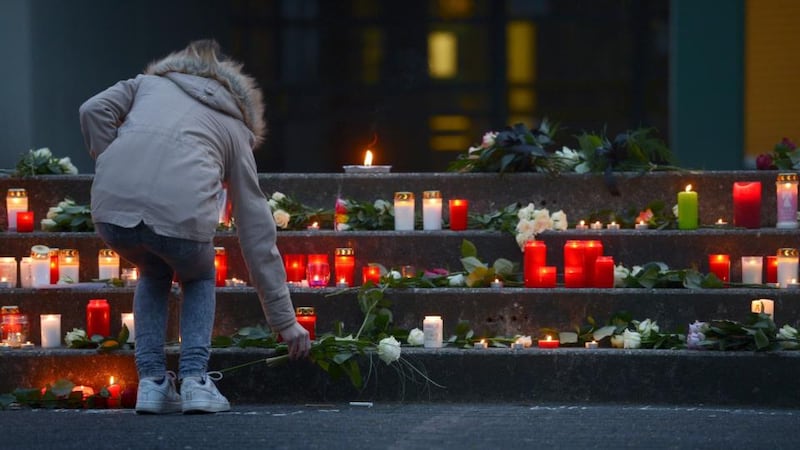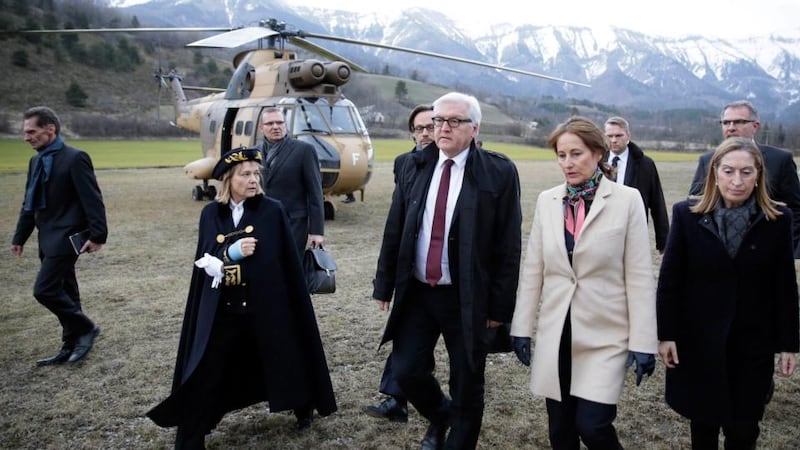“The first message I sent when I reached the ground was that there are certainly no survivors,” said Dr Frédéric Petitjean. The rescue doctor, who is employed by the French fire department, was lowered by rope from the first helicopter to reach the site of the crash of the Germanwings A320 yesterday.
Though the crash occurred in fine weather just before 11am yesterday, it began to snow at nightfall, further complicating the task of the 371 gendarmes and 380 firefighters who have been dispatched to retrieve remains.
Twelve helicopters have been mobilised. A contingent of gendarmes was to spend the night on the site to secure it.


The helicopters cannot land on the treacherous, sandy, crevice-filled terrain, so everyone must be lowered by rope.
“It’s like the scene of a crime,” Dr Petitjean said. “When you go into a house where there is a dead body, you have to complete your investigation before you move it. We will move the bodies as soon as the investigation allows. The bodies are very damaged. It will take time.”
Gendarmes recovered one of two black boxes in the hours following the crash. Immediate examination of its contents "will enable the investigation to advance rapidly", said interior minister Bernard Cazeneuve.
Prime minister Manuel Valls said that "no hypothesis is excluded" regarding the cause of the crash.
The remains will be brought to the makeshift chapel in the gymnasium at the Maison de la Jeunesse in Seyne-les-Alpes, one of the mountain villages closest to the crash site. Clusters of French, German, Spanish and European flags are arranged on the stage of the gymnasium, along with some 20 sprays of flowers.
Sixty-seven of the victims were German. Forty-five were Spanish. ‘The victims include 16 teenagers and two teachers from a secondary school in the German town of Haltern.
Ten condolences books lay open, each with a ballpoint pen, awaiting messages of comfort to the families of the 150 victims. Dozens of little red Mass candles sit on table tops between the flags and flowers.
Mountain
Two maps, one of Seyne-les-Alpes, the other of the mountain where the aircraft crashed, are stuck to a schoolteacher’s easel. A star, marked in red felt pen, marks the scene of the crash, at 1,650 metres.
President Francois Hollande, Chancellor Angela Merkel and Spanish prime minister Mariano Rajoy are due to arrive at Seyne at 2pm today.
"We saw smoke and we were worried," Jean-Marie Michel, deputy mayor of Le Vernet, the closest village to the crash, told Libération newspaper.
“We didn’t hear anything. It crashed at a place called Travers . . . I’ve made four trips in a four-wheel-drive, ferrying gendarmes. Everyone in the village did the same. But it’s a 40-minute hike after the vehicle, in difficult conditions, to reach the site.
Steep slope
“The plane crashed into a very steep slope, almost a cliff. The impact is visible. Like a bomb. The debris is spread over a huge area. There are just little pieces of the aircraft.”
Christophe Castaner, the socialist member of parliament from the Alpes de Haute Provence department, overflew the crash site with Mr Cazeneuve. "Terrifying images," he tweeted. "There is nothing left but debris and bodies."
Residents were unimpressed by the imminent visits by the German and Spanish leaders. They have been told victims’ families are also on their way.
“The most important thing is to help the families,” said Cécile Michel, an employee at the town hall who volunteered to prepare 150 meals for rescue workers last night. She choked back tears as she added, “Nothing like this every happened here before. It’s awful. We don’t have any airports around here. The planes just fly over.”











